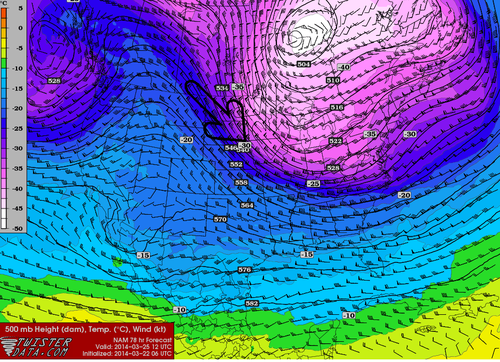Below Normal February Temperatures for most of Continental US; Will Return
What seems to be the winter that won’t give up in Southern Manitoba has not only been persistent in the Canadian Prairies, but also a good chunk of the United States. The central and eastern half of the US has been fairly consistent in staying below normal in February thanks to a persistent trough on the east coast and ridge over the west coast. Consequently, a northwest flow in the upper levels of the atmosphere has established itself over the Northern US Plains and Midwest and, as a result, Arctic highs were continuously helped down into the region. Interestingly enough, central North America has been one of the only regions in the world to experience below normal temperatures in February.

The pattern, which has not shifted around much this winter, has caused extremes to occur not only temperature-wise but also precipitation wise. The problem is that with the ridge staying put over the area systems have trouble making their way into the region and instead diverted further north. California continues to experience severe to exceptional drought – the highest level of drought, as per the US Drought Monitor. Consequences might not be immediate but could spell trouble once the wildfire season rolls around, and when water reserves literally start to run dry in the state. Currently, about 60% of the state is considered to have an above average risk for wildfires due to the drought, according to NICC.
Sunday night into early next week yet another blast of Arctic air is expected to infiltrate across a good chunk of the United States. In addition to this cold blast, models are showing a potent Nor’easter Tuesday-Wednesday next week blasting through the Northeast US and Atlantic Canada which could drop significant amounts of snow. However, there is a glimmer of hope for the central United States as most models are in agreement that temperatures late next week into next weekend will be either bounce back to normal or slightly above normal.

